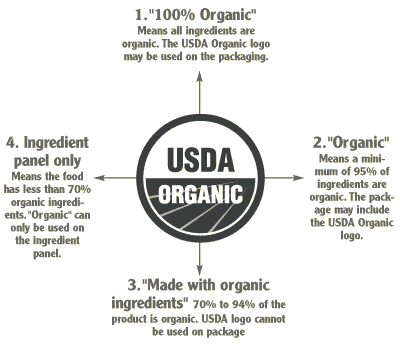The grocery store is a maze of propaganda with various products being portrayed as healthier than another. But which product is truly healthier and which product is a waste of money?
The first thing you need to know is that the labeling of eggs, poultry, and beef is regulated by the USDA (United States Department of Agriculture). Here are the USDA definitions of some common terms you may have heard before.
Free Range: Producers must demonstrate to the agency that the poultry has been allowed access to the outside. *Notice there is no provision for the amount of time they must be allowed outside or how much room they may be provided to do so. This means, that even if a chicken only spent 2 minutes outside in a 2×2’ area, they may still be considered “Free Range”.
Natural: A product containing no artificial ingredient or added color and is only minimally processed. *Minimal processing means that the product was processed in a manner that does not fundamentally alter the product. The label must include a statement explaining the meaning of the term natural (such as “no artificial ingredients; minimally processed”)
Hormone Free (Poultry or Pork): Hormones are not allowed in raising hogs or poultry. *Therefore, the claim “no hormones added” cannot be used on the labels of pork or poultry unless it is followed by a statement that says “Federal regulations prohibit the use of hormones.”
Hormone Free (Beef): The term “no hormones administered” may be approved for use on the label of beef products if sufficient documentation is provided to the Agency by the producer showing no hormones have been used in raising the animals. *This does not mean the product is completely hormone free, this only implies that additional hormones were not provided to the animal. Hormones are naturally present in cattle (A 3 ounce serving of beef without added hormones contains 0.9 ng of estrogen while a 3 oz portion of hormone added beef contains 1.2 ng of estrogen. That is only a 0.3 ng difference between the 2 products.)
Organic: This is a labeling term that denotes products produced under the authority of the Organic Foods Production Act. The principal guidelines for organic production are to use materials and practices that enhance the ecological balance of natural systems and that integrate the parts of the farming system into an ecological whole. *Organic food is produced by farmers who emphasize the use of renewable resources and the conservation of soil and water to enhance environmental quality for future generations. Organic meat, poultry, eggs, and dairy products come from animals that are given no antibiotics or growth hormones. Organic food is produced without using most conventional pesticides; fertilizers made with synthetic ingredients or sewage sludge; bioengineering; or ionizing radiation.
Which Product is Best?
Products labeled “Free Range”, “Organic”, and “Hormone Free” are not more nutritious than their counterparts. Eggs from Free Range birds have the same nutrient profile as eggs from caged birds. An organic banana has the same amount of calories and cancer fighting phytochemicals as a non-organic banana does. In fact, studies have shown that eating non-organic foods does not increase your risk of cancer. Buying organic, hormone free, and free range can be pricey without any known benefit to our health. This truly comes down to a matter of preference.
The wise words of the American Institute for Cancer Research sums it up best- “…research clearly shows that eating a wide variety of plant foods every day – in addition to being physically active and maintaining a healthy weight — is what really matters. When it comes to lowering cancer risk, the bottom line is: enjoy vegetables, fruits, whole grains and beans however you can – fresh, frozen, canned, conventional or organic. Get them however you can, but get them.”
